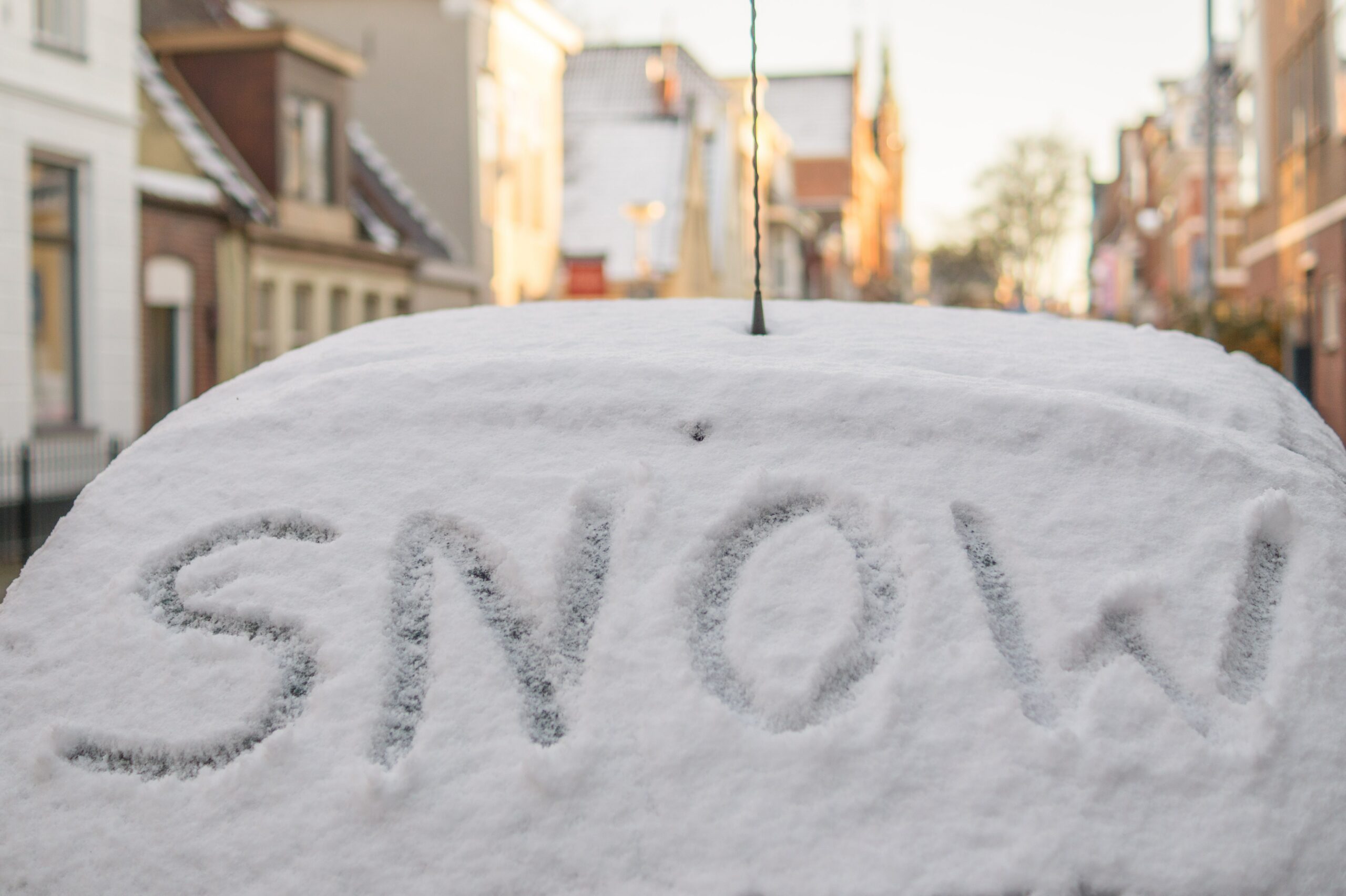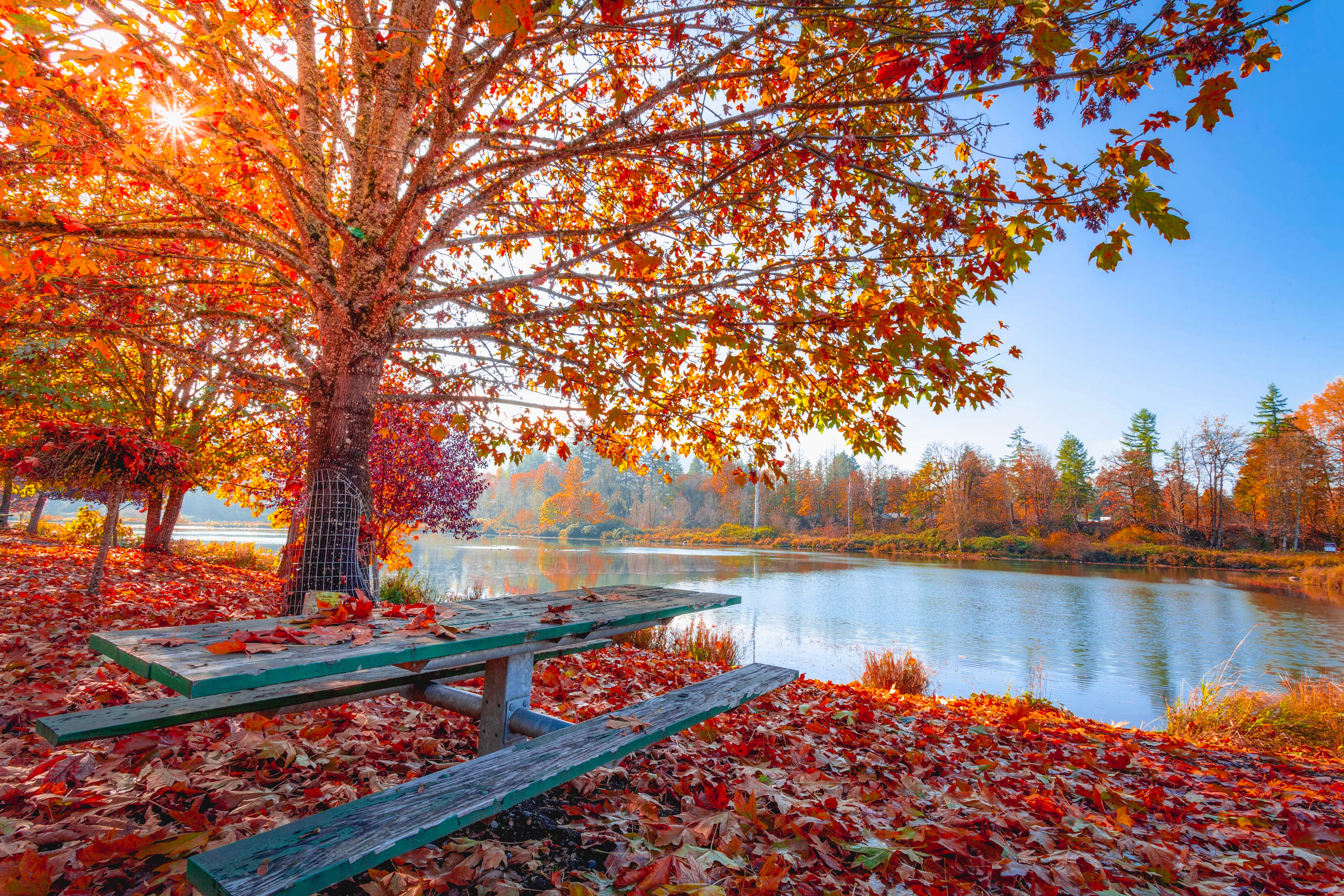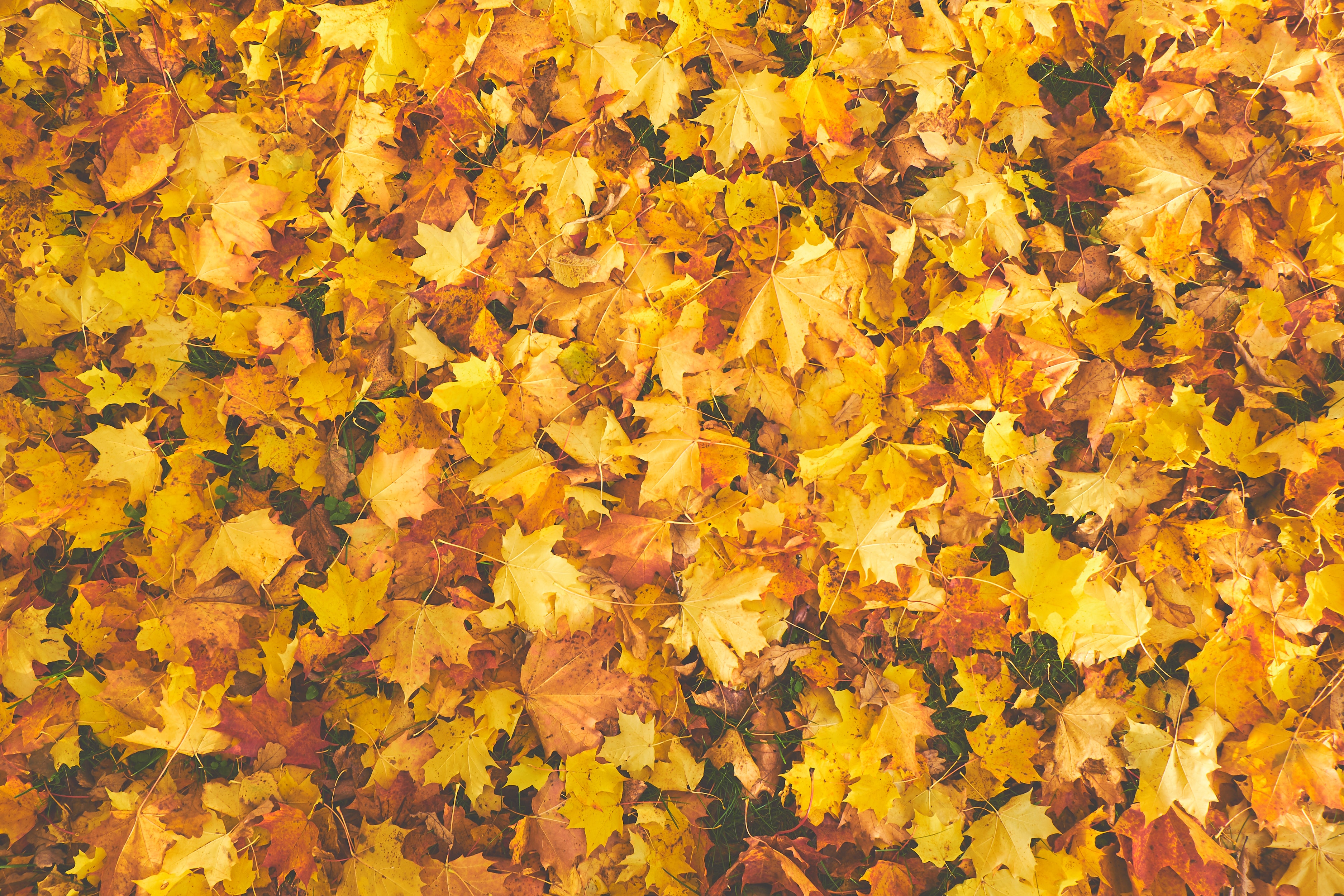Filter Categories
All
COMMUNITY INVOLVEMENT
COMPANY NEWSLETTERS
KC'S BLOG
PRESS RELEASES
Filter Categories
All
2015
2016
2017
2018
2019
2020
2021
2022
2023
2024
2025



With winter weather in full swing, it’s time to prepare for everyone’s favorite holiday activity: shoveling snow. Rather than soldiering on through blizzards with a shovel and a bad back, why not make the job easier with a few easy tips?
Before the snow falls, take some preemptive action. Clear your yard of anything that you don’t want to get destroyed by snow (or even snow removal), such as hoses, decorations, or dog tie-outs. Stake out garden beds or any portions of your yard that contain elements that cannot be brought inside or stored in a shed. This will prevent accidental snow buildup when it comes time to shovel and dump snow. A little home surveying goes a long way!
If you know snow is imminent and want to lessen the amount of clearing you’ll have to do, consider buying a few waterproof tarps. These can be placed over sidewalks, walkways, and even cars to help protect their surfaces and decrease post-snowfall clearing. Remember to weigh the tarps down with stones or bricks, or to tie them down if being used to cover your car. After the snow has fallen, remove the tarp to reveal a clean walkway or car underneath. It may require a little shoveling to lighten the tarp’s load, but it will provides a protective barrier nonetheless.
If your shovel tosses are getting lighter because snow keeps sticking, consider using a lubricant. WD-40, petroleum jelly, or even some cooking spray can help prevent snow from sticking to your shovel, allowing for more successful scoops. Family Handyman recommends wiping down your tools before storing them to prevent rust buildup and to increase each tool’s longevity.
Rather than using a standard, straight-handled shovel or a snow-blower reliant on gas, consider upgrading to something more ergonomically- and ecologically-friendly. There are a variety to choose from, such as Garant’s sleigh shovels designed to scoop and push while lessening the strain on your back, or even the Snow Bully which uses a set of wheels to act as a small snow plow. If you’re not ready to let go of the snow shovel that has been passed down through your family for generations, consider getting an attachment that will still help lessen the strain on your back, such as an eziMate, which creates an additional point of leverage with a detachable handle.
If you pinched a nerve and it’s flurrying outside, break out the leaf blower to take care of some light dustings. Additionally, a wet/dry vacuum such as a Shop-Vac can be turned into a makeshift snowblower by attaching the hose to the exhaust, pointing, and blowing the snow away.
While enjoying a well-deserved rest inside, be sure to keep an eye on the snowfall. Although it may seem irritating to continuously trudge outdoors to shovel, it’s easier to move light, fluffy snow every few hours than having to somehow lift packed blocks of ice out of your driveway.





On Friday, November 22, 2019, workers broke ground on the highly anticipated East Midtown Greenway (EMG) project for the NYC Economic Development Corporation (NYCEDC). The Department of City Planning (DCP) determined in 1993 to create a mixed-use path encircling the entire island of Manhattan. The West Side has been quicker in advancing this vision than the East; however, the design and construction of the EMG is a significant step towards achieving this goal. KC Engineering and Land Surveying, P.C. is thrilled to have played a major part in bringing this project to fruition.
The EMG is the second phase of a three phase development entitled the East Midtown Waterfront Project (EMWP). The intent of the EMWP is to construct a continuous public waterfront esplanade over the East River in Manhattan, NY. The EMG’s southern and northern termini are East 53rd Street and East 61st Street. The project also includes a new pedestrian bridge that will provide access the esplanade at 54th Street and Sutton Place South.
KC performed the topographic survey, utility survey, and easement survey for the project. Work associated with the production of these deliverables included a comprehensive investigation of all available record utility and government agency maps. KC also researched available design drawings, as-built drawings, and aerial maps spanning approximately 80 years to understand site conditions, both above and below ground. KC’s survey crew coordinated with an arborist to accurately measure, classify, and record all trees within the project limits.
KC also assisted in providing an existing conditions report. Narratives provided a detailed description of the project land use, ownership, and zoning. This report also included a written description of onsite utilities and important features including an existing 11-foot gravity retaining wall and a comprehensive engineering investigation of an existing bridge located adjacent to the project area.
In addition, KC actively coordinated with the NYCEDC and a bridge architectural firm to provide a bridge design that is visually appealing, meets the high expectations of the community, and adheres to the design standards set forth by both the NYC Department of Transportation (NYCDOT) and the New York City Department of Parks and Recreation (NYCDPR). The primary structure is a steel tied arch bridge with one arch on either side of the walkway. These arches have a rise of 18 feet, and are inclined 6 degrees outward. The walkway is a concrete deck with a clear width of 14 feet between railings. Lighting fixtures will be mounted directly onto the arches to provide ample lighting onto the bridge deck, while minimizing impacts to adjacent homes and the parkway below. The bridge will serve pedestrians and bicyclists, and will have striping and signage to safely facilitate both.
Additional Press Coverage:
NBC New York
amNY


The engineering field is increasingly touted as one of the best STEM career fields for college students to pursue. It pays well, there are many specialties within the field that students can opt to study, and there is an almost never-ending supply of job opportunities.
While engineering is a stable, well-paying field, both the abundance and importance of the work can sometimes make it stressful. Some helpful tips for managing job stress can go a long way in preventing you from becoming overwhelmed or burned out while on the job.
Engineers constantly contend with looming deadlines, which can cause unexpected stress. Before you start a project, break it up into smaller, manageable tasks and make a schedule for yourself that contains a timeline for accomplishing each task.
Consider delegating certain tasks or asking others for assistance in accomplishing the work. Teamwork is an important component for any project, and being afraid or ashamed to ask for help can actually derail your career and personal growth.
Find coping tools that help alleviate stress. Whether it’s exercising or pursuing a hobby before or after your shift; listening to music while you work; or taking a five-minute break during the day to stretch your legs, take a few deep breaths, and just clear your mind – figure out what helps you and find ways to incorporate those strategies into your routine.
Don’t feel that you have to suffer in silence. This doesn’t mean you should sow seeds of discontent by complaining to anyone who will listen, but if you feel the project deadline is unrealistic for your workload, have a candid conversation with your supervisor. They likely have the experience, knowledge, and insight that can maximize your productivity and may be able to approve overtime to help you meet the deadline. Additionally, your supervisor may delegate some of the work to others on your team to help lift the weight from your shoulders.
Even if the deadline is set in stone, articulating that you are invested in doing your level best to meet the deadline will go a long way toward demonstrating your maturity, conscientiousness, and commitment to the company.
Finally, think positively. Allowing yourself to become mentally bogged down in a vortex of worry, anger, and confusion can actually slow your productivity. If you spend too much time focusing on the idea that you can’t accomplish the task, it will become a self-fulfilling prophecy.
Instead, rise to the occasion. Make a plan and get to work. Find solutions, not problems. Instead of focusing on the negative, find ways to adapt and solve problems. Don’t allow negativity, whether from others or in your own mind, to sabotage you. Focus your mind and energy on being a problem-solver. This will get you further and can help you stand out as an innovator and someone who takes initiative.
At the end of the day, we each have a lot more control over the success of every project than we think, but it all starts with our mindset.



The autumnal equinox is in full swing and it’s almost Earth Day’s half birthday, so what better way to celebrate than with a few tips for seasonal cleaning and conservation?
It’s easy to resent those beautiful maple trees in your front yard when you remember that they’re deciduous, but before you start stretching to prepare your body for hours of raking, consider mowing the lawn. Not only is it faster to deal with leaves using your mower, but these leaf pieces can be used to enrich the soil beneath your grass.
To mulch your leaves and feed your lawn, Scotts Miracle-Gro recommends taking off the grass catcher and mowing your leaves into dime-sized pieces. According to Scotts, “you’ll know you’re done when about half an inch of grass can be seen through the mulched leaf layer.” Other lawncare services say that it’s sufficiently mulched when you can see 50% of the grass through the leaf pieces, so either unit of measurement works. The more the leaves are mulched, the faster they will decompose.
Once the leaves are cut into small pieces, microbes and worms in the soil will start decomposing it for you, and your lawn will be happier as a result – as will your back, which avoided raking!
The only thing more terrifying than Halloween is improvidence – luckily, it’s easy to get festive while staying eco-conscious. Blogger Beth Bucynski wrote an article for Care2 Causes sharing some of her favorite tips for recycled Halloween decorating, with everything from thrift-store scarecrows to cheesecloth ghosts. Here are a few of her suggestions:
Next time you finish the rest of the eggs in your fridge, hold onto the egg carton. With some careful cutting, some non-toxic paint, a few strands of ribbon, and a few googly eyes, you can make an upcycled bat with ease.
The same can be done with several empty plastic milk jugs and ribbon to make an upcycled skeleton!
If you saved some of the leaves before making mulch, throw them into a few biodegradable garbage bags, apply some felt eyes and teeth, and show off your very own trash tarantula.
With Halloween right around the corner, there’s a good chance you’ve got a pumpkin or two – but what’s your plan for November? Rather than hiding them in your trashcan or letting them rot on your porch through January, compost them. Pumpkins are great composting material, so long as you take a few careful steps in preparation.
Make sure your jack-o’-lantern’s candles are removed, as well as any candle wax inside. If your pumpkin is decorated with ribbons or stickers, take these off too. According to Earth 911, pumpkins that have been painted or coated with a preserving sealant or glitter should not be composted, but if only a portion of the pumpkin is coated, it’s okay to cut off that portion and compost the rest. Finally, remove any pumpkin seeds to prevent germination in the compost pile.
Just like with the leaves, the more cut up/divided the pumpkin is, the faster the rate of decomposing – a good excuse for smashing pumpkins.
According to Earth 911, if you don’t have a compost bin, you can dig a hole in a garden bed or your yard and add the pumpkin. Next, replace the soil over the hole, and it will compost naturally through the winter. In the meantime, you can rest assured knowing your lawn is taken care of, your egg cartons didn’t go to waste, and your pumpkin will nourish your flowers in the spring.
